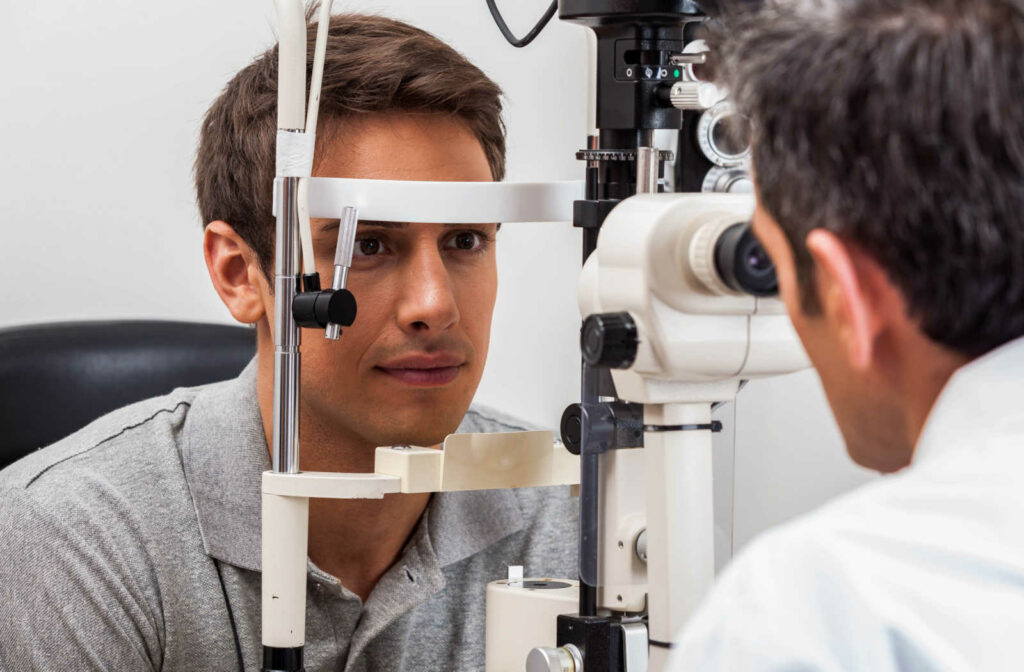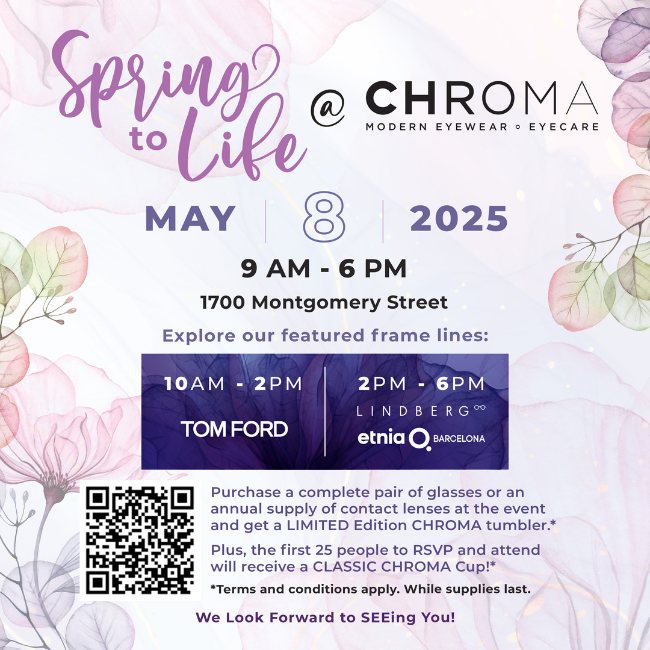Whether you wear contact lenses or want to switch from eyeglasses to contact lenses, you’ll need a contact lens exam and a regular eye exam.
Generally, regular eye exam frequency is annually or more often if you’re at a higher risk of developing eye conditions. But how often do you need an eye exam for contacts?
You should have a contact lens exam at least once a year to ensure the correct contact lens fit and confirm that contact lens wear is not negatively impacting overall eye health. You may need a contact lens exam more frequently based on your visual needs and risks.

What Is a Contact Lens Exam?
Like eyeglasses, with contact lenses, there is no one-size-fits-all approach. And because eyeglass prescriptions differ from contact lens prescriptions, these can’t be transferred.
Once your lifestyle, preferences, and eye history are discussed, a contact lens exam is performed to determine the following:
- If you’re a first-time contact lens wearer, it determines your candidacy for contact lenses.
- Determines your lens prescription.
- Helps to find the right type, material, and size of contact lenses for your eyes.
Once the exam is complete, our CHROMA eye doctors will:
- Reveal if you have vision problems or eye conditions, like dry eyes, which can make wearing contact lenses difficult.
- Recommend the best design and fit of contact lenses to provide comfort and clarity.
- Help choose the right wear schedule to suit your needs, such as daily, weekly, bi-weekly, monthly, or extended wear.
Contact lens exams also include instructions on properly inserting, removing, and caring for your contact lenses.
At CHROMA, we offer the most advanced technology and Contact Lens options. There are multifocal and bifocal options for those patients over 40 that need both distance and near help. Monovision may also recommended depending on your visual needs and prescription. This is a technique that utilizes your dominant eye for distance vision and your non-dominant eye for near vision. Our Doctors can evaluate what Contact Lens option is best for you and make sure your visual needs are successfully achieved.
Tests Performed During a Contact Lens Exam
Your eye shape, size, and prescription are unique. And because contact lenses sit on the cornea (clear outer surface of the eye), the wrong fit or type of contact lens can lead to discomfort, blurry vision, and sometimes complications.
It’s vital to take precise measurements of your cornea, iris (colored part of the eye), and pupil and check the quality of your tears to prevent these from occurring:
Cornea Measurement
The size and curvature of your cornea are measured using a keratometer. The keratometer analyzes light reflection off your cornea to determine the base curve.
Cornea measurements help to determine the correct curve and size of your contact lenses. Corneal topography can also be used to gain more accurate measurements of the entire cornea.
You will require specialty contact lenses if you have an irregular cornea shape (astigmatism). Toric lenses or rigid gas-permeable contact lenses help to correct this refractive error.
Pupil & Iris Measurement
Measuring your pupil and iris helps to determine the size of your contact lenses. This is done with a special ruler or other measuring devices.
Pupil and iris measurements are important, especially if you need to wear specialty contacts such as rigid gas-permeable lenses.
Tear Film Evaluation
Long-term contact lens wear can cause dry eyes. Dry eyes can also make it difficult to wear contact lenses because your eyes don’t produce enough or quality tears. Symptoms of contact lens-related dry eyes can include eye pain, burning, gritty feeling, and discomfort.
Our eye doctors at CHROMA may use one or several ways to evaluate the quantity and quantity of tears your eyes produce. They may recommend contact lenses for dry eyes.
After your exam, a contact lens fitting involves trying a pair of contacts to assess if they are comfortable and provide clear vision. You will be sent home with a trial pair and return for a follow-up evaluation after a week or two.
If the trial pair works and is comfortable, you are all set. However, if contact lenses don’t feel quite right, you can try a different brand, type, or material of contact lenses. Comfort, safety, and clarity are first ensured before a contact lens prescription is given.
Your Journey to Successful Contact Lens Wear
If you wear contacts, getting your eyes examined annually or more often with a contact lens exam is vital. Even with contact lenses, you can experience symptoms such as blurry vision, pain, or discomfort.
When you schedule an appointment with our doctors at CHROMA modern Eyewear Eyecare, we help ensure healthy vision and contact lens comfort.



